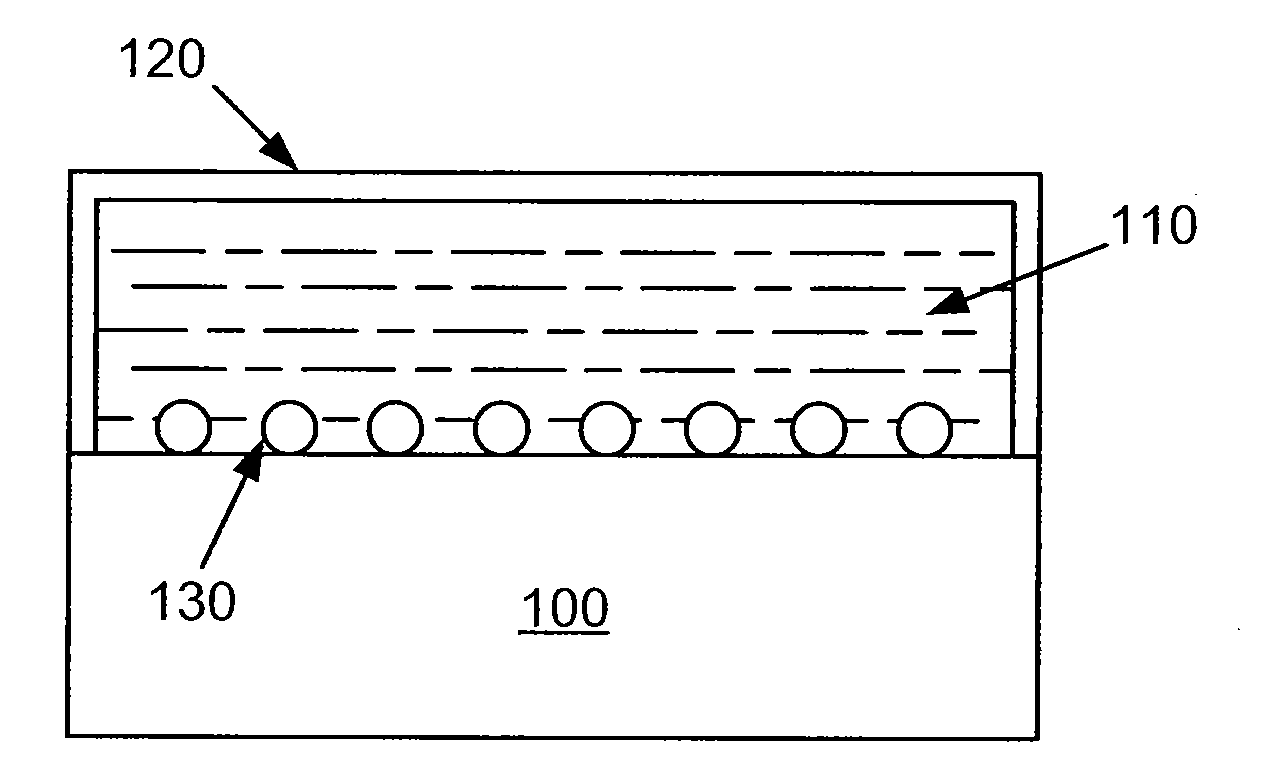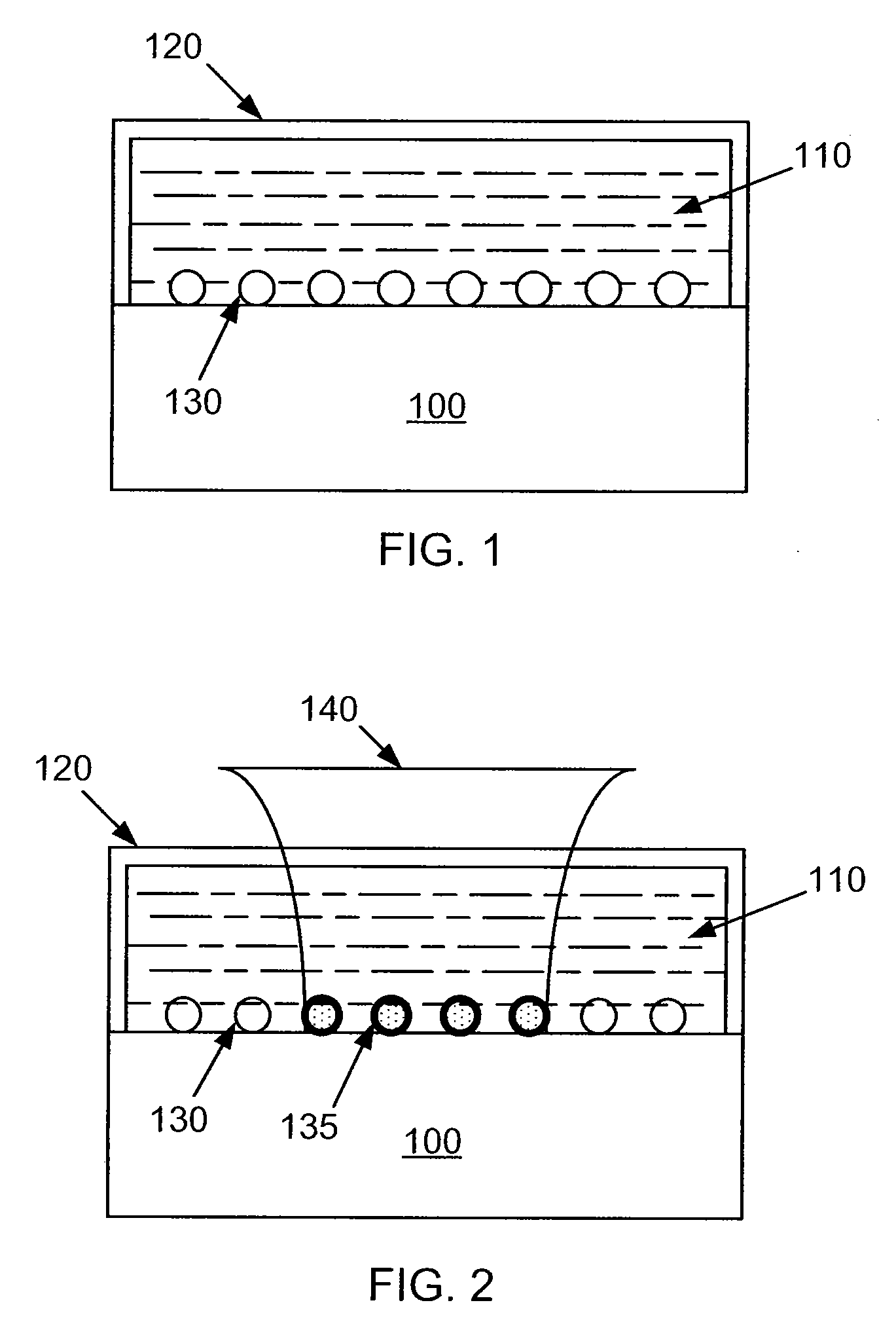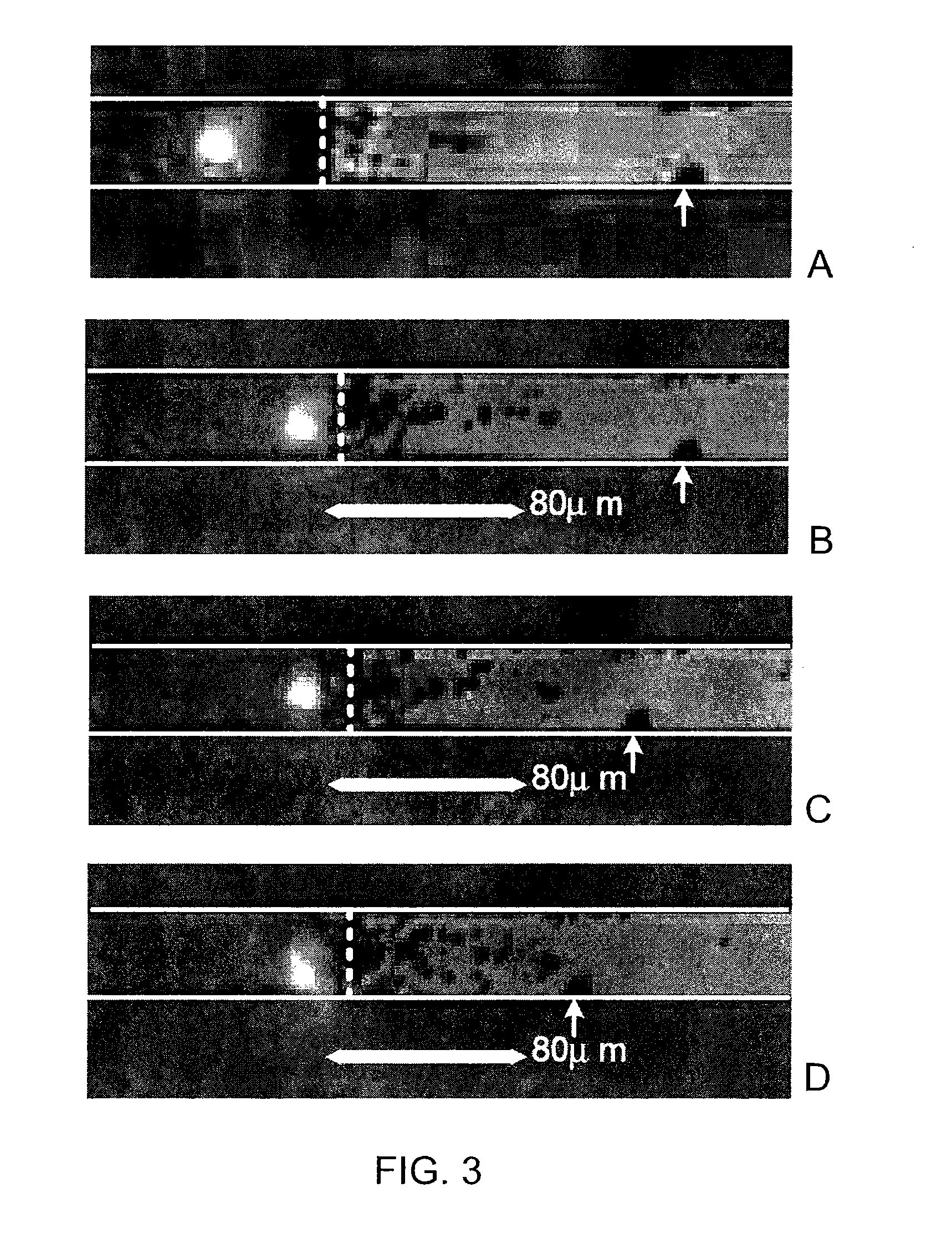Plasmon assisted control of optofluidics
a technology of optofluidics and lasers, applied in the direction of positive displacement liquid engines, glassware laboratories, water supply installations, etc., can solve the problems of not being desirable or possible to have nanoparticles freely suspended in liquid solution, and the utility of electrorowetting devices. great, droplet-based devices,
- Summary
- Abstract
- Description
- Claims
- Application Information
AI Technical Summary
Benefits of technology
Problems solved by technology
Method used
Image
Examples
Embodiment Construction
[0037]The present invention relates generally to microfluidic control techniques. In particular, the present invention provides a method of plasmon assisted optofluidics using a laser. More particularly, the present invention provides a method for optically controlling fluid in a microchannel using a plasmon resonance in fixed arrays of nanoscale metal structures to produce localized evaporation of the fluid when illuminated by a stationary, low power laser. Merely by way of example, the invention has been applied to drag the surface of the fluid, drive evaporative pumping, and provide intra-channel distillation and sample concentration, but it would be recognized that the invention has a much broader range of applicability.
[0038]Here we demonstrate a technique of plasmon assisted optofluidics (PAO) according to certain embodiments of the present invention. By incorporating plasmonic resonant structures into a microscale vessel channel, some embodiments show that plasmonic heating a...
PUM
 Login to View More
Login to View More Abstract
Description
Claims
Application Information
 Login to View More
Login to View More - R&D
- Intellectual Property
- Life Sciences
- Materials
- Tech Scout
- Unparalleled Data Quality
- Higher Quality Content
- 60% Fewer Hallucinations
Browse by: Latest US Patents, China's latest patents, Technical Efficacy Thesaurus, Application Domain, Technology Topic, Popular Technical Reports.
© 2025 PatSnap. All rights reserved.Legal|Privacy policy|Modern Slavery Act Transparency Statement|Sitemap|About US| Contact US: help@patsnap.com



